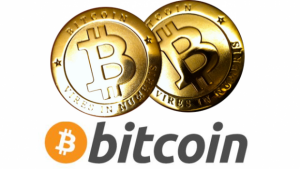LBRY Loses Case Brought by SEC
LBRY lost a case brought by the SEC in which the regulatory agency claimed that LBRY’s tokens were a security.
LBRY says it will continue delivering its decentralized content platform — best known for hosting videos and schematics for a 3D-printed gun called “The Liberator” — and recover from losing the case. It says the ruling from the United States District Court for the District of New Hampshire sets a dangerous precedent for digital assets because it means most, if not all, digital assets could be considered securities.
LBRY’s defense stated that its native token isn’t a security. Instead, it is a utility token meant simply to lubricate the LBRY ecosystem. Its legal team also asserted that the SEC failed to respect due process by not informing LBRY that it considered the token a security.
The parties involved filed for a summary judgment based on the evidence presented. Sales of LBRY token (called “LBC” in the ruling) was one point of contention. Sales of half the premined LBC, plus funds from venture capitalists and a $500,000 loan, helped fund the initial development of LBRY’s system.
Naturally, the Howey Test was one key part of the case. The Howey Test says a transaction could be considered an investment contract if it included:
- An investment of money
- In a common enterprise
- With the expectation of profit
- To be derived from the efforts of others
LBRY disputed that its token met the third and fourth parts of the above condition. Was there an expectation of profit to be derived from the efforts of others? Or was it more on the level of raising money for an ice cream truck by giving coupons for free ice cream cones to anyone who contributed a couple of bucks?
People who bought the token certainly seemed to expect profit just based on the ballooning of its market cap soon after its initial token sale. The market cap zoomed to $1.2 billion even though the network only hosted three videos. By the valuation of its token, it was essentially a unicorn that hadn’t built out its product yet.
And how did it respond? By publishing a blog post titled “1.2B Market Cap and We Don’t Care.” The blog post hinted that the market cap might have risen too fast to be justified at that level. However, it implied that LBC could be worth more later. In retrospect, publishing that blog post may not have been the brightest move in the world. Meanwhile, its developers were still busy debugging things in the background.
LBRY followers called the judge’s reasoning poor. LBRY had stayed mostly quiet about its efforts — at least, in public. According to some supporters, the premined tokens were the real heart of the matter.
LBRY was a lively, buggy and small content application at first.
With the product not all the way there yet, the price predictably plummeted by November 2016. LBRY’s CEO acknowledged that they were dealing with a “minimum viable product” in which the features hadn’t been completely developed yet. “There is no reason to buy” the tokens, he said.
One benefit LBRY had was that, unlike YouTube, it didn’t have to answer to advertisers and wouldn’t censor content. It wouldn’t even take down the content that you disagree with and think is stupid. There might be a case for investigating possible copyright violations, but trolls couldn’t cause havoc by violating fraudulent DMCA requests like they can on YouTube.
It was decentralized and small enough to mostly fly under the radar at first, so there was nothing to stop gun lovers from publishing schematics for “ghost guns” and instructions for 3D-printing and assembling if they wanted — and, once added, it would have been impossible to remove from the LBRY blockchain without fouling up everything that came afterward. As Ethereum learned, “rewinding” the blockchain to remove a bad action can be really controversial.
Yes, “The Liberator” is really on LBRY. And the U.S. government probably knows it.
It may be uncertain whether “The Liberator” — a schematic for an untraceable 3D-printed gun — first put LBRY on the government’s radar. However, it does have an interesting history that includes attracting attention from the Department of Defense. The best-known ghost gun, its plans were downloaded more than 100,000 times after it was promoted by Kim Dotcom. Then the Department of Defense demanded that its developer, Defense Distributed, retract the plans.
However, like scattering a bag of feathers in a wide-open and windy area, it’s easier to distribute it than recollect it. It reached the United States Court of Appeals for the Ninth Circuit, which vacated a lower court’s injunction ordering Defense Distributed to stop distributing the plans and ordered the district court to dismiss the case.
To make sure the order stuck, Defense Distributed uploaded the plans to LBRY. If Defense Distributed hadn’t done that, another person who downloaded the plans could have.
The U.S. government can be unforgiving of not getting its way. It’s been working on ways to ban what it calls “ghost guns” — guns like The Liberator that aren’t registered and don’t have a serial number. However, such a task could be as difficult as banning cocaine that can be hidden in shipments that look perfectly legitimate to inspectors that may not have time to make more than the most superficial inspection. You might catch some, but you’re not going to catch them all.
It’s likely that the government knows that “The Liberator” is on LBRY. It’s easy to be a conspiracy nut and say that it’s the reason that LBRY worked its way through government agencies that normally work in their own separate silos — unless agencies that regulate parts of the same macro agency like the SEC and CFTC get into a tug of war about who’s responsible for regulating what — until it got to the SEC, which was incidentally working on other cases in which it alleged that digital assets like Ripple’s XRP were unregistered securities. A case against the smaller LBRY could fly under the radar.
However, if it’s a case of retaliating against the platform that lets people publish what they want even if the government doesn’t like it, the SEC can’t say so out loud. It had to focus on whether LBC was a security anyway.
The United States District Court for the District of New Hampshire agreed with its argument that some people might have bought it to publish their videos on the LBRY platform, but investors looking for a return on investment accounted for a significant amount of its sales volume. They had been promised that the value of their tokens would grow as the platform grew. That meant LBC could really have met the third and fourth part of the condition laid out in the Howey Test.








